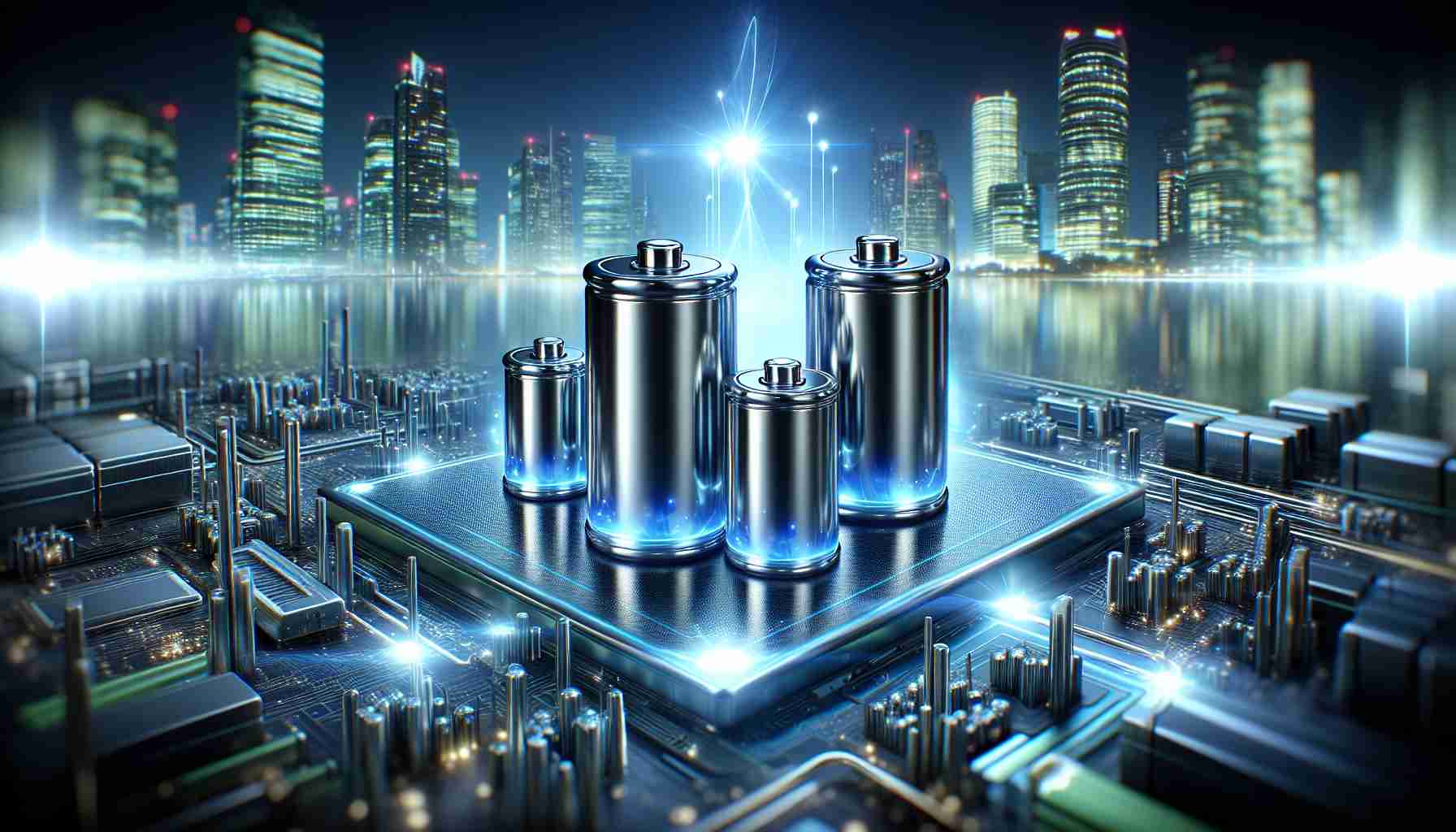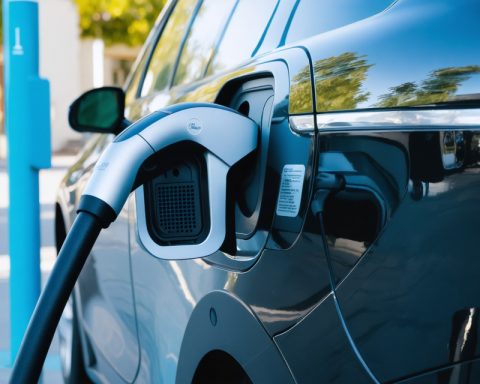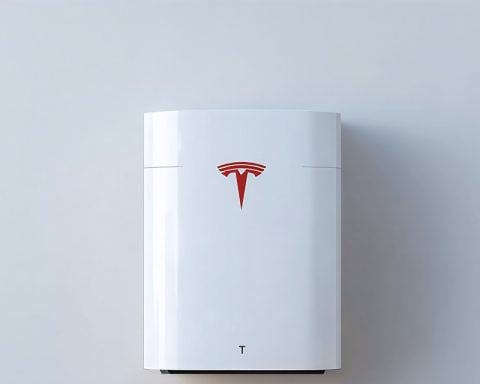- Silicon anodes are making a comeback, offering potential breakthroughs in battery technology.
- LeydenJar’s innovation features a 100% silicon anode with a porous architecture, addressing silicon’s expansion and enhancing battery life.
- This new design achieves 500 cycles with only 20% capacity loss and extends to 700 cycles with 30% capacity loss.
- Silicon anodes store ten times more lithium ions than graphite, allowing for lighter and more powerful batteries.
- Potential applications include longer-lasting electric vehicles and mobile devices.
- The technology is undergoing testing, with LeydenJar collaborating with manufacturers to implement it.
- Competitors like Amprius Technologies are also exploring silicon anodes, accelerating innovation in the sector.
Silicon, once deemed too volatile for reliable battery use, is making a determined comeback, promising to redefine how we power our everyday devices. The secret lies in a revolutionary development by LeydenJar: a 100% silicon anode that gracefully withstands the swelling challenges traditionally associated with this material. Imagine a porous architecture that acts like a nimble dancer, flexing effortlessly to accommodate silicon’s natural expansion during charge-discharge cycles.
This ingenious design sidesteps the need for cumbersome clamps, allowing batteries to thrive for 500 cycles with a mere 20% capacity loss, and pushing to 700 cycles before losing 30% capacity. Such durability and resilience paint a promising picture for the future of electric vehicles and consumer electronics alike.
Silicon’s real superpower? It can store ten times more lithium ions than graphite, the reigning champion of battery anodes. This enhancement fuels potential for lighter, smaller batteries capable of packing more power. Picture longer drives in electric vehicles and mobile devices that last days on a single charge.
While this technology undergoes rigorous testing, its potential is sparking excitement across the tech world. LeydenJar isn’t navigating these waters alone; it’s partnering with other manufacturers to breathe life into its innovative solution.
As this silicon saga unfolds, competitors like Amprius Technologies are hot on its heels, racing to harness the power of silicon anodes. The innovation train is charging forward, promising faster charges and greater performance.
Stay curious and keep an eye on these promising developments. They might redefine the batteries that power everything from our cars to our phones, lighting up a new path in our tech-driven lives.
Could Silicon Anodes Be the Game-Changer for Battery Technology?
How-To Steps & Life Hacks
If you’re an early adopter or a tech enthusiast intrigued by silicon anode technology, here’s how you can start incorporating it into your life:
1. Stay Informed: Follow tech news sites and publications for the latest updates on silicon anode battery advancements.
2. Participate in Pilot Programs: Some tech companies may offer pilot programs for new devices with silicon anode technology. Sign up to be an early tester.
3. Consider Future Purchases: When it’s time to upgrade your smartphone or electric vehicle, factor in whether they support or are expected to support silicon anode batteries.
Real-World Use Cases
1. Electric Vehicles (EVs): Silicon anodes promise extended battery life and mileage, making EVs more attractive to potential buyers who are concerned with range anxiety.
2. Consumer Electronics: Think of devices like smartphones, tablets, and laptops enjoying significantly longer battery life between charges, improving overall user experience.
3. Grid Storage: Efficient storage solutions powered by silicon anodes can store renewable energy more effectively, helping balance energy grids during peak usage times.
Market Forecasts & Industry Trends
The global battery market is projected to grow significantly as demand from automotive and consumer electronics sectors increases. According to a report by Grand View Research, the battery market size is expected to reach $310.8 billion by 2027. Silicon anodes are likely to capture a notable share of this growth due to their enhanced energy density and longevity.
Reviews & Comparisons
Silicon anodes, such as those developed by LeydenJar, are showing promising results compared to traditional graphite:
– Energy Density: Silicon offers higher energy density.
– Cycle Life: While graphite-based batteries typically degrade faster, silicon anode solutions are maintaining performance longer.
– Weight and Size: Silicon’s enhanced capability can reduce battery size and weight, which is vital in tech like drones and wearables.
Controversies & Limitations
– Cost: The manufacturing processes for silicon anodes are currently more expensive than traditional ways.
– Scalability: Mass production of silicon anode batteries at competitive prices remains a challenge.
– Environmental Impact: The energy-intensive production process could offset some environmental benefits unless innovations are made for greener manufacturing practices.
Features, Specs & Pricing
– LeydenJar’s Technology: Claims their silicon anodes can charge 80% in under 5 minutes.
– Comparison with Conventional Batteries: Silicon anodes stand out due to their high lithium-ion storage capacity, which is ten times that of graphite.
– Cost Predictions: Analysts predict pricing could initially be high but expect it might align with traditional solutions as production scales.
Security & Sustainability
– Thermal Stability: Silicon anodes are inherently more stable than some other battery technologies, which could reduce the likelihood of overheating.
– Recyclability: Ongoing research is exploring ways to make silicon anodes easier to recycle than current graphite models.
Insights & Predictions
Analysts suggest that silicon anodes could dominate the battery market within the next decade. Companies like Tesla are investing in research, indicating their belief in the potential of this technology. Industry leaders predict faster adoption as real-world efficacy is proven.
Tutorials & Compatibility
– Integration with Current Tech: Look for updates from tech brands regarding compatibility with their current battery management systems.
– DIY Solutions: As more devices roll out silicon anode batteries, tutorials for maintaining and optimizing these batteries will likely become common.
Pros & Cons Overview
Pros:
– Higher energy density and capacity
– Reduced size and weight
– Longer cycle life
Cons:
– Higher initial costs
– Manufacturing complexities
– Environmental considerations in production
Actionable Recommendations
1. Monitor Trends: Keep an eye on tech firms announcing silicon anode products.
2. Educational Resources: Enroll in online courses or attend webinars on battery technology advancements.
3. Community Engagement: Join forums and groups focused on battery innovation to share knowledge and insights.
Explore more on this topic with credible tech sources like TechCrunch and Engadget. Stay ahead in the ever-evolving landscape of battery technology!













